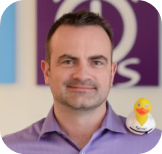The Project Management Institute (PMI®) celebrated its 50th anniversary at their Global Conference in Philadelphia on October 5-7, 2019. It was under the theme of “Innovation Made Possible by a Project Manager” and with a celebration of the 50 Most Influential Projects of the Past 50 Years (see https://mip.pmi.org/ for details). Microsoft invited me to join them at PMI® Global Conference this year, so I had the opportunity to speak to hundreds of project managers and executives about the state of project management and the needs they and their organizations have.
The conference was a good reminder of how important the role of the project manager is and has been in human history. Many of our greatest achievements had project managers working behind the scenes to pull teams together and accomplish the seemingly impossible. Many of these individuals never held the official title of project manager nor were they certified, but they managed projects, nonetheless. For me, that was a key takeaway and something to consider as a technology vendor: How do we cater better to the unofficial project manager? How do we simplify and demystify the processes and tools used to manage work?
Almost exactly a year ago, Microsoft announced their new vision for modern work management with Microsoft Project (read their blog post here), and with the benefit of hindsight, it’s clear that they hit the nail on the head with their vision. Two of the three services announced have already launched (Home and Roadmap), and the New Project Management Service is on its way. These three new services allow organizations and unofficial project managers to get work done, whether as formal projects or ad hoc work. Already we’re seeing the Roadmap functionality helping organizations communicate more effectively around programs, departmental priorities, and quarterly focus.
After three days of exhibit hall duty (29 hours on my feet in the Microsoft booth and a very sore body), I walked away excited about the future of project management and inspired by how much gets accomplished out there. Here are my key takeaways:
1. “Projects” aren’t always called that!
According to many of the participants at the conference, work doesn’t always start out as formal projects; it has a way of evolving into it. That’s probably why so many initiatives don’t get a formal project manager assigned at the outset and hence the increase in “unofficial project managers.” By the time an initiative is fully understood as a ‘project’, it’s often too late to apply formal processes and tools to manage them effectively.
2. People think Microsoft Project is stuck in the 1980’s! (Spoiler: It’s not!)
When Microsoft Project was first released in 1984 (Footloose, anyone?) it was a task management and scheduling tool targeted at project managers responsible for an individual project. Many of the folks we spoke to still think of it that way, so they were blown away by the end-to-end project and portfolio management capabilities we were demonstrating in the booth. I was met with amazement and lots of questions, people double-checking whether we were actually showcasing Microsoft Project! Clearly, we (and Microsoft) haven’t done a good enough job communicating the power of the platform to enable collaboration, governance, and scheduling for organizations and PMO’s.
If you haven’t seen the ‘art of the possible’ with Microsoft Project Online, check out a full walkthrough here.
3. Automated, visual reporting is the #1 request!
The holy grail for both project managers and their stakeholders is clearly the automation of visual reports and dashboards that help all parties clearly communicate status across portfolios, programs, projects, and the resources of the organization. We heard that time and time again at the conference. Microsoft Power BI natively connects to the Microsoft Project (Online) database, which provides easy-to-use, interactive reports and dashboards. Our customers report saving hundreds of hours with this automation and increasing adoption of the underlying tools, since everyone wants to ensure they report accurate status to executives.
Project Management isn’t rocket science; it never has been. However, it does require consistency and discipline, which is sometimes hard for a Quadrant 2 activity (see 7 Habits of Highly Effective People). However, the pay-off is often 10x or 100x for those who make the commitment.
Our customers report cost savings, shortened project cycles, as well as fewer resourcing conflicts as a result of a deliberate approach to project management.
At Sensei, we’ve built our entire business on bringing together the discipline of project management (PMI®) and the best technology out there (Microsoft Project & Cloud). We have hundreds of clients across all major industries, and we continue to innovate to stay on the forefront of industry standards, best practices, and technology. The PMI® Global Conference 2019 was a great opportunity to learn from other project management professionals in the field; moreover, to educate practitioners on the capabilities of the project management platform from Microsoft.

CEO, Sensei

Sensei Project solutions is a recognized global leader in Microsoft project and portfolio management (PPM) solutions focused on improving the way your team works. Sensei’s unique turn-key PPM Platform in the Microsoft Cloud, Sensei IQ™, is designed around your needs and a modern way of working. Sensei IQ™ helps you make informed decisions by understanding how all work fits together with meaningful insights into projects, resources and programs across your portfolios.